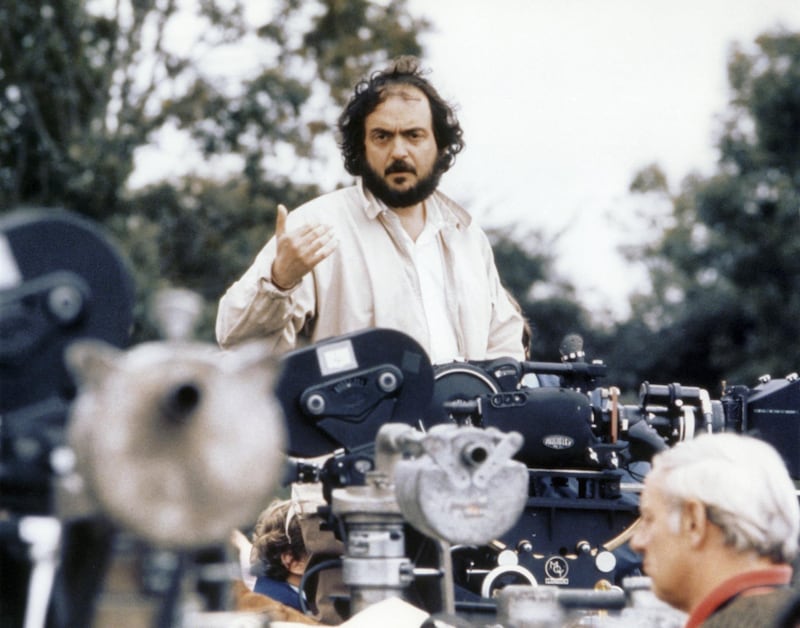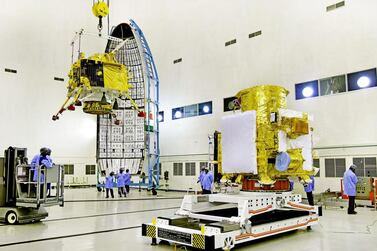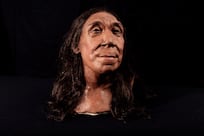This weekend may mark the 50th anniversary of the 1969 Apollo 11 Moon landing, but should we instead be celebrating the work of one of the 20th-century's greatest filmmakers?
Conspiracy theories about the Moon landing have been around pretty much since the day it happened. The first big book on this, We Never Went to the Moon: America's Thirty Billion Dollar Swindle, by former US naval officer Bill Kaysing, was published in 1976. Similar theories had existed since at least 1968, when Apollo 8 orbited the Moon.
Perhaps the most enduring conspiracy, however, is that the landing was shot in a studio, with none other than 2001: A Space Odyssey director Stanley Kubrick behind the camera. No less reliable a body than The Flat Earth Society adapted this as official doctrine in 1980, and as the claims raised traction, the theory also arose that Kubrick's The Shining was a coded, post-fact admission of guilt.
Some of the evidence backing up any of these claims is entirely circumstantial. In the early 1960s, America was seriously lagging behind in the Space Race. The USSR had successfully put the first dog, man and woman in space while the US floundered. In September 1962, President John F Kennedy announced that the US would put a man on the Moon before the end of the decade as a matter of national pride. With barely seven years to achieve this feat, from a virtual standing start, wouldn't you want a back-up plan in place? Having recently made 2001, Kubrick was at the cutting-edge of special effects, a de facto expert on faking space scenes and the obvious choice to provide that back-up.
There's a certain paranoid logic to the theory, and the timing of the landing was certainly fortuitous, but it hardly represents empirical evidence. When we begin to look at the apparent coded messages within The Shining, however, things do become a little more intriguing...
First of all, there's the very fact that Kubrick chose to make The Shining at all. This was the director who had brought us high art such as Dr Strangelove. Now, here he was, uncharacteristically taking on a pulp horror movie. Even when the director did adapt novels, he tended to select fairly weighty, conceptual source material, such as Anthony Burgess's A Clockwork Orange.
Not only would Kubrick make the film, however, but he would also spend 13 months shooting it, regularly forcing the main cast to act out scenes well over 100 times until everything was just right. His lead actors, who included Jack Nicholson as protagonist Jack Torrance, were physically and emotionally exhausted by the end of the shoot, with Shelley Duvall close to breakdown and suffering hair loss as a result of the stress. It seems like a lot of effort for a horror genre piece, even for a perfectionist like Kubrick.
Given that the director was such a stickler for detail, it also seems strange that he strayed so far from his source material. The novel's author, Stephen King, hated Kubrick's adaptation because of the many, seemingly needless and random changes the director made to the story. King had even written a screenplay for Kubrick, which the director completely ignored, creating his own adaptation instead.
For instance, the creepy twins, the daughters of the Overlook Hotel's murderous former caretaker in the film, are nowhere to be found in King's book. This could be explained by the fact that the twins are one of the film's most memorable visuals, but could it also be a reference to Gemini, the space mission that preceded Apollo? This is particularly poignant when you consider that, in the film's opening scenes, when Torrance is being interviewed to take on the caretaker role, an eagle sits squarely on the shelf centre screen. The name of the Apollo's lunar landing module? Eagle.
Even the room in which the hotel’s hidden secrets lurk doesn’t escape Kubrick’s tweaking. In King’s novel, this is room 217. In Kubrick’s film, it’s room 237. The official explanation is that the Timberline Lodge Hotel in Oregon, which was used for exterior shots of the Overview (the interiors were in a studio at Hertfordshire’s Elstree Studios), requested that Kubrick use a room number that didn’t exist in the hotel so guests wouldn’t be too scared to stay there. Is it a coincidence, though, that the official average distance from the Earth to the Moon is 237,000 miles?
There are other subtle visual clues, too: one scene shot in a storeroom features boxes of powdered orange drink Tang, the staple diet of space missions, on the shelf alongside a box numbered 39, which was the number of the launch pad from which Apollo 11 took off.
The scene during which Torrance, descending into madness, types reams and reams of paper containing the words "all work and no play makes Jack a dull boy" also seems to have a double meaning. On the old-fashioned Adler Universal 39 (there's that number again) typewriter used in the movie, the lower case "l" and the number "1" are identical. Is Jack actually writing about Kubrick's "A11" work?
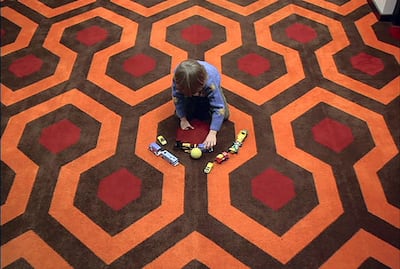
This is all highly speculative, but there is one key segment of the film that seems to just be too heavy on symbolism to be a total coincidence. As we build to the film's climax, there's an aerial shot of young Danny Torrance playing with his toy cars on a patterned carpet. The pattern bears an undeniable similarity to aerial shots of the Apollo 11 launch pad (Kubrick, remember, had all the interiors built in a studio to his very specific requirements). As the camera pans around to show Danny from ground level, he stands and we see that his jumper features a knitted rocket, along with the words "Apollo 11" on the front.
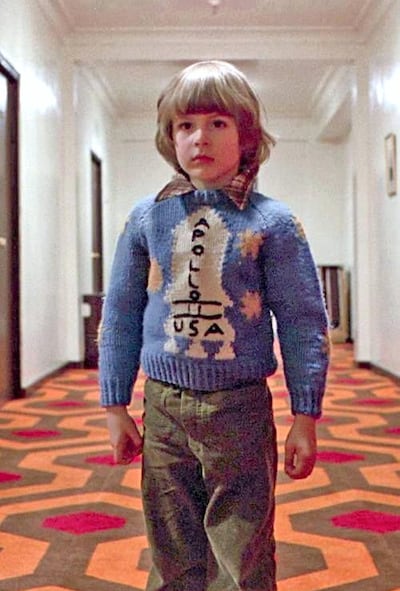
It doesn't stop there, either. Remember the creepy woman in the bath in room 237? She is played by Billie Gibson, whose sole credit on IMDb is for this. There is also a Bill Gibson, also with just one credit on the movie database. He was a Nasa photographer who directed Footprints on the Moon, Nasa's documentary on the mission.
There are certainly a lot of strange coincidences surrounding The Shining, but is there any more to it than that? It may seem an odd choice of novel for Kubrick to adapt, but he had long expressed a desire to make "the scariest movie ever". There are many Moon/Apollo references in the movie, and it seems unlikely a perfectionist like Kubrick would put them there accidentally, but he had a notoriously dark sense of humour, too. So, did he simply hear the conspiracy theories and decide to mess with his audience?
There’s another conspiracy theory that’s probably my favourite. The Moon landing was indeed faked by Kubrick, but the director was so particular that he refused to shoot in a studio, demanding that the footage be shot on location for maximum realism. That, of course, required Nasa to get the entire film crew and the astronauts to the Moon and back in order to convincingly fake the landing. Now that makes perfect sense.
